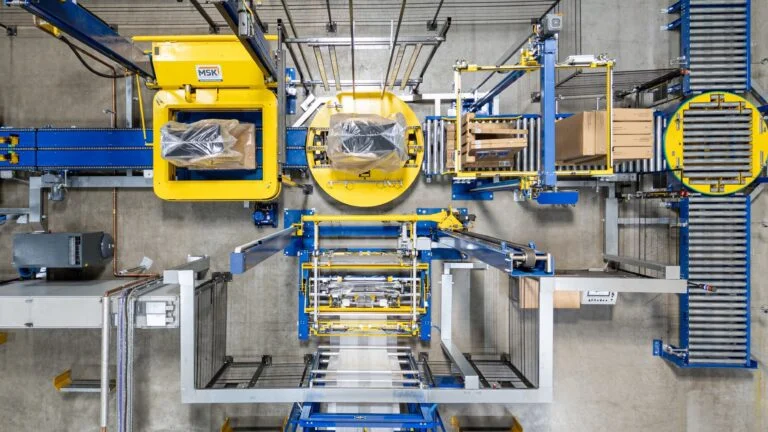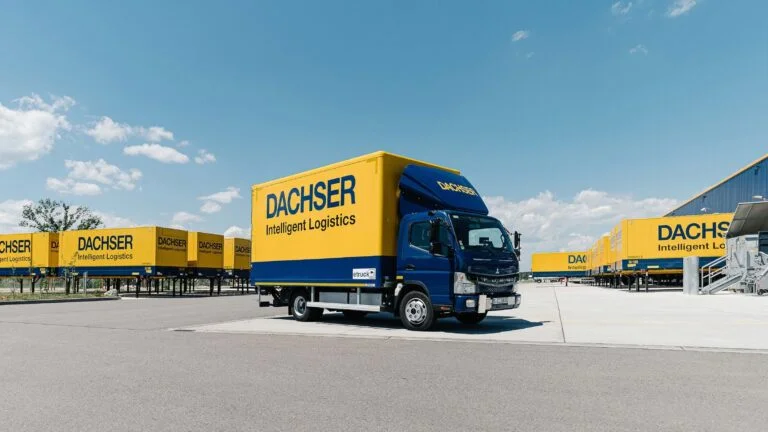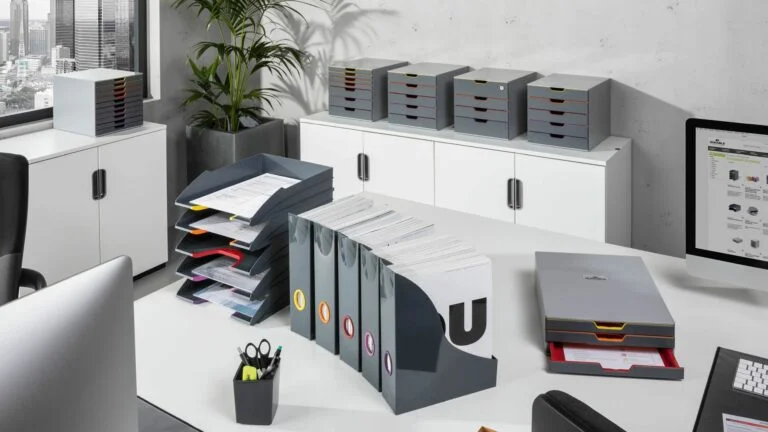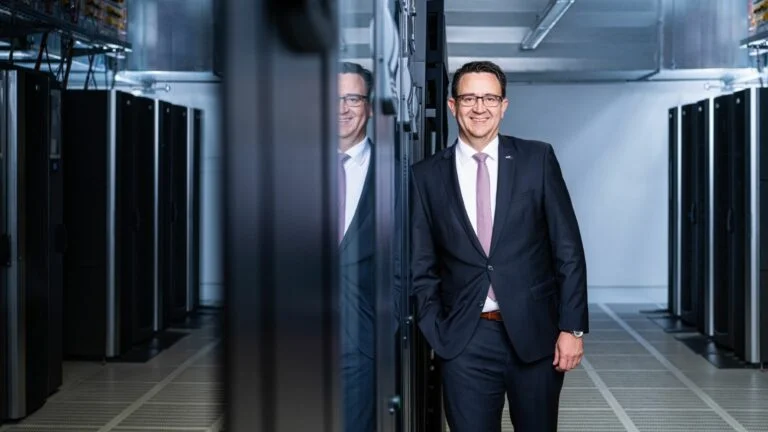Under the hood: The fully automatic route to safe and stable pallets
By Marcus Schick I 4 minute read
To transport pallets safely to their recipient, DACHSER relies on a packaging innovation at its Magdeburg logistics center: a fully automated hood shrink system. Packaging a wide variety of goods has never been more efficient and resource-saving.
Quick Read
Stacked together, the five garden chairs on the pallet look like a lofty throne as the forklift places them on a conveyor belt. This immediately carries them into an enclosed system, where sensors measure the pallet and its load. Next, a gripper system lowers a transparent hood of film over the stack of chairs. Just a few seconds later, the material contracts under air suction, is heated until it fits snugly around the contours of the goods, and is then sealed underneath the pallet. What moments ago was just a wobbly stack of chairs is now compact, protected, and ready for transportation.
“Our customers expect not only efficiency but also safety, quality, and sustainability from our contract logistics solutions,” explains Thomas Klare, Head of Corporate Contract Logistics at DACHSER. “That’s exactly where our technological innovations come in. The plant in Magdeburg is an example of how intelligent automation can translate into real-world processes that add real value.”
The plant in Magdeburg is an example of how intelligent automation can translate into real-world processes that add real value.
A real help in daily logistics operations
Wrapping both the goods and the pallet they’re on in a transparent cover suitable for transportation is one of the regular, but not to be underestimated, challenges of logistics. “When they reach our logistics center, many goods – especially those in the home and garden improvement sector – often aren’t in handy, stackable boxes, but rather in bulky shapes, on unstable pallets, or even unsealed,” explains Matthias Ziegenhagen, General Manager of the DACHSER branches in Landsberg and Magdeburg.
With conventional wrapping methods, it takes a great deal of effort – and a lot of film – to turn the goods into compact pallet packs; they are more susceptible to damage during transportation or have to be comprehensively secured. The new system is a practical solution developed in response to precisely these requirements.
Wrapping, strapping, stretching, positioning, securing – what used to be done in Magdeburg semi-automatically and in several work steps is now a single, fully automated process. Thanks to its sensors, the hood shrink system can precisely determine the quantity of film required. The film hood then encloses the goods tightly and securely by way of air extraction and shrinkage. In the final step, a special piercing device ensures that the form-fitting wrapped pallets can later be safely picked up by a lift-truck or forklift.
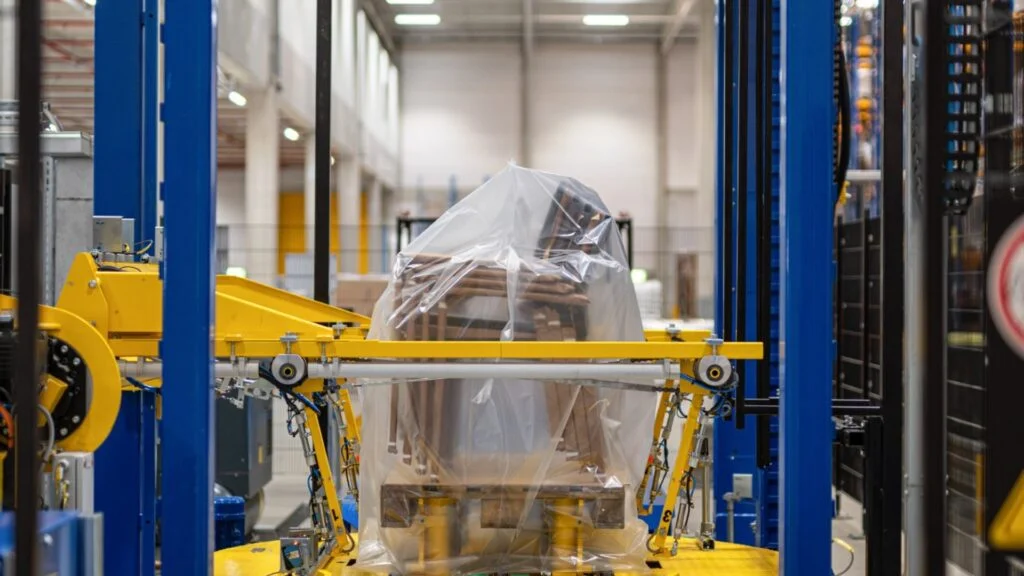
“The system doesn’t just take over one work step, it fundamentally changes the dynamics of day-to-day work,” Ziegenhagen says. “It means less rework for our colleagues in the warehouse and makes the load noticeably more stable.” In fact, it has greatly reduced the damage rate – which is good news, especially for customers.
As well as being very efficient, this technology also saves resources. The shrink film consists of around 30 percent recycled material. According to in-house calculations, film consumption is also up to 85 percent lower than with conventional wrapping technology. This is because the system precisely measures the height of each individual pallet.
percent of the shrink film is recycled material.
The system doesn’t just take over one work step, it fundamentally changes the dynamics of day-to-day work.
Innovation with charisma
“With every single one of our technological innovations, our goal is to make our processes more future-proof in a practical way. This is also true for details such as the packaging method,” Klare says. Consequently, the hood shrink system in Magdeburg fits into DACHSER’s strategy of focusing on scalable, digitally integrated automation solutions in contract logistics.
But what does this mean for the people in the warehouse? “Less physically strenuous work and more time for warehouse processes that add more value. It really lightens the load,” Klare says.
